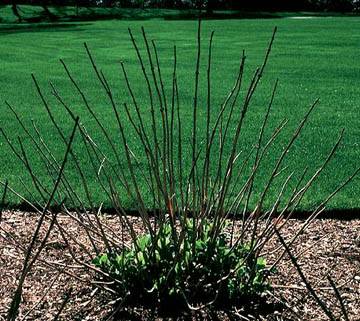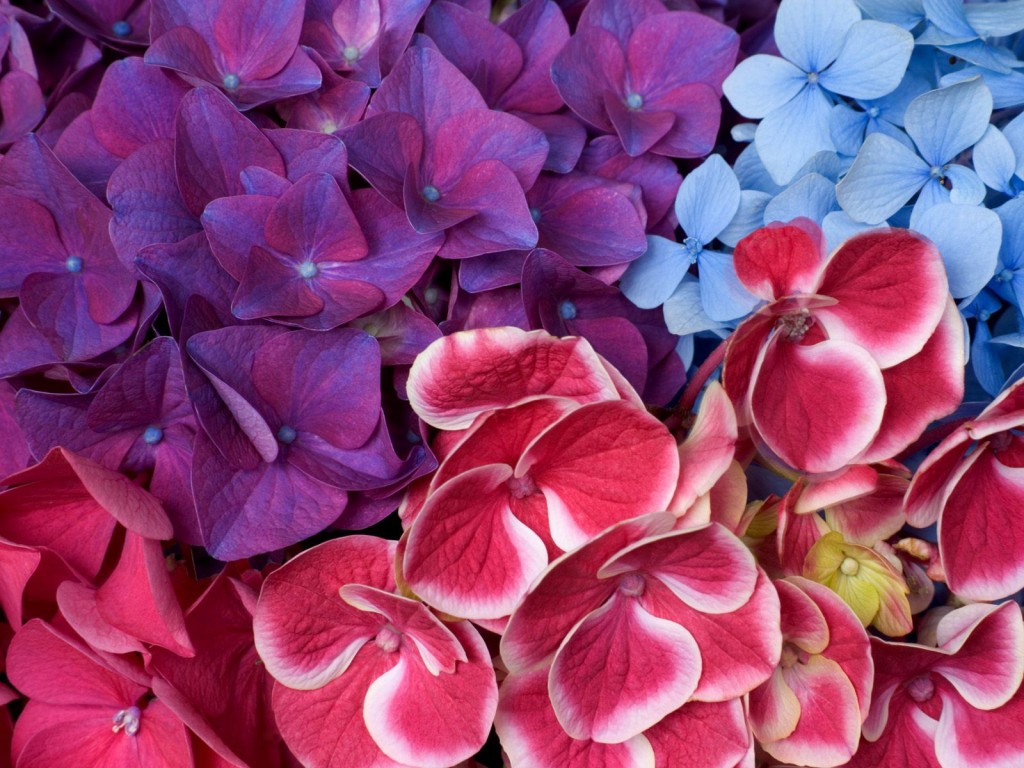




Why are my Hydrangeas not Blooming?
There are three possibilities for lack of flowering among the hydrangea species. The first two – too much shade and improper pruning – apply to all hydrangeas, while the other – weather-related damage to flower buds – applies primarily to the Bigleaf hydrangea.
Too Much Shade
While most Hydrangea species benefit from some shade, too much shade can reduce flowering. This is particularly true of Panicle hydrangea, which is the one Hydrangea species that grows well in full sun. If you have a hydrangea that used to bloom well but now flowers only sparsely, evaluate whether the growth of nearby trees has reduced the amount of light that reaches the hydrangea. If so, you may want to consider moving the hydrangea to a sunnier location.
Improper Pruning
Improper pruning can also reduce flowering in Hydrangea. Since Bigleaf and Oakleaf hydrangeas flower on previous year’s growth, potential flowers buds would be removed if the plants were pruned in fall, winter or spring. Panicle and smooth hydrangea flower on this year’s growth, so pruning them in early summer would reduce or eliminate flowering for that year.
 Frozen Buds
Frozen Buds
The most common reason for lack of flowering in the Bigleaf hydrangea is unfavorable weather. Most Hydrangea Macrophylla cultivars flower primarily on previous year’s growth. Weather conditions that damage aboveground parts of the plant can reduce flowering. Damaging weather conditions include early fall freezes that occur before the plant is completely dormant, extremely low winter temperatures, and late spring freezes that occur after the plant has broken dormancy. In USDA Cold Hardiness zone 6 and warmer, which is the recommended growing area for H. Macrophylla, the most common of these unfavorable weather events is late spring freezes that damage tender new growth. This is particularly true in the southeastern U.S., where “see-saw” temperatures are very common in the spring.
‘All Summer Beauty’ Bigleaf hydrangea responds quickly to warm temperatures in late winter and early spring by breaking dormancy and producing new leaves. Unfortunately, these spells of warm weather are often followed by periods in which temperatures reach well below freezing. The severity of the damage caused by these freezes depends on how many of the buds had broken dormancy. If a substantial portion of the buds on a stem were actively growing, the whole branch may die. For some cultivars, the loss of the aboveground part of the plant will completely eliminate flowering the following summer. The plant will produce new buds from the base of the stems, but stems produced from these buds will not flower in these cultivars.
Other cultivars, such as ‘All Summer Beauty’, ‘Nikko Blue’, and ‘Madame Emile Mouillere’ are a bit more flexible, and will flower from the buds that develop from the base of the stem. However, if another cycle of warm weather followed by freezing temperatures damages shoots developing from these buds, these cultivars may flower only lightly, if at all.
 What should I do?
What should I do?
It may be possible to protect plants from weather-related flower bud damage by covering them during late spring freezes with blankets, sheets, etc. There is also evidence that some bigleaf hydrangea cultivars have the ability to flower on current year’s growth, which means that, even if the plant is killed back to the ground, it should still flower during the subsequent summer. One such cultivar is ‘Endless Summer’ (Bailmer©), which was released to the retail market in 2003.
Re-flowering ability has also been reported in the cultivars ‘Decatur Blue’, ‘Oak Hill’, ‘David Ramsey’ and ‘Penny Mac’. These five cultivars, which are similar in appearance, produce blue flowers in acidic soil and pink flowers in neutral soil.
While the primary reason for growing Bigleaf hydrangea is for the flowers, a few cultivars have ornamental foliage that makes the plant attractive even when not in flower. Cultivars with variegated or gold foliage, such as ‘Mariesii Variegata’ or ‘Lemon Zest’, can brighten up a dark spot in the garden.
(The United Sates National Arboretum)


